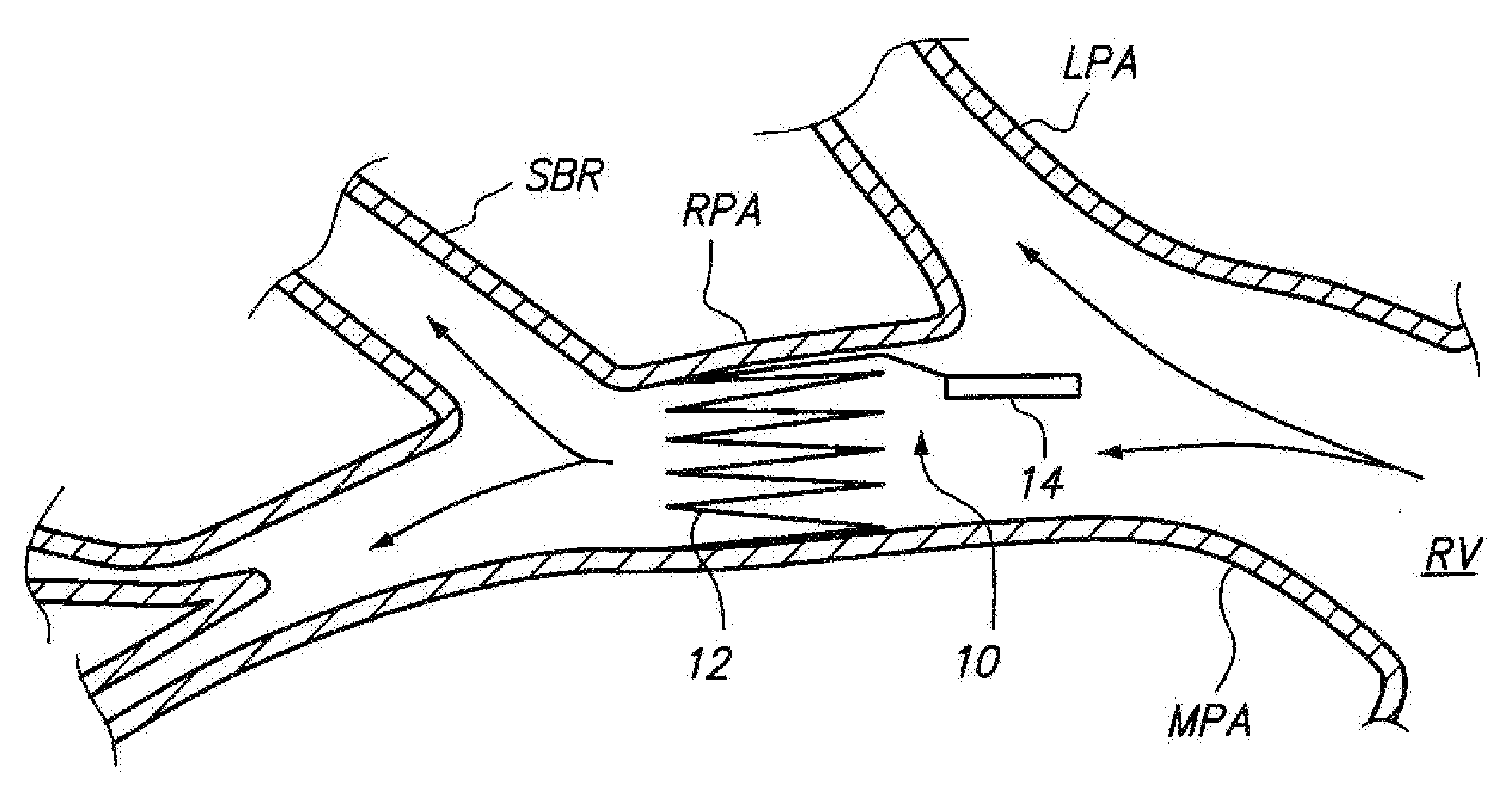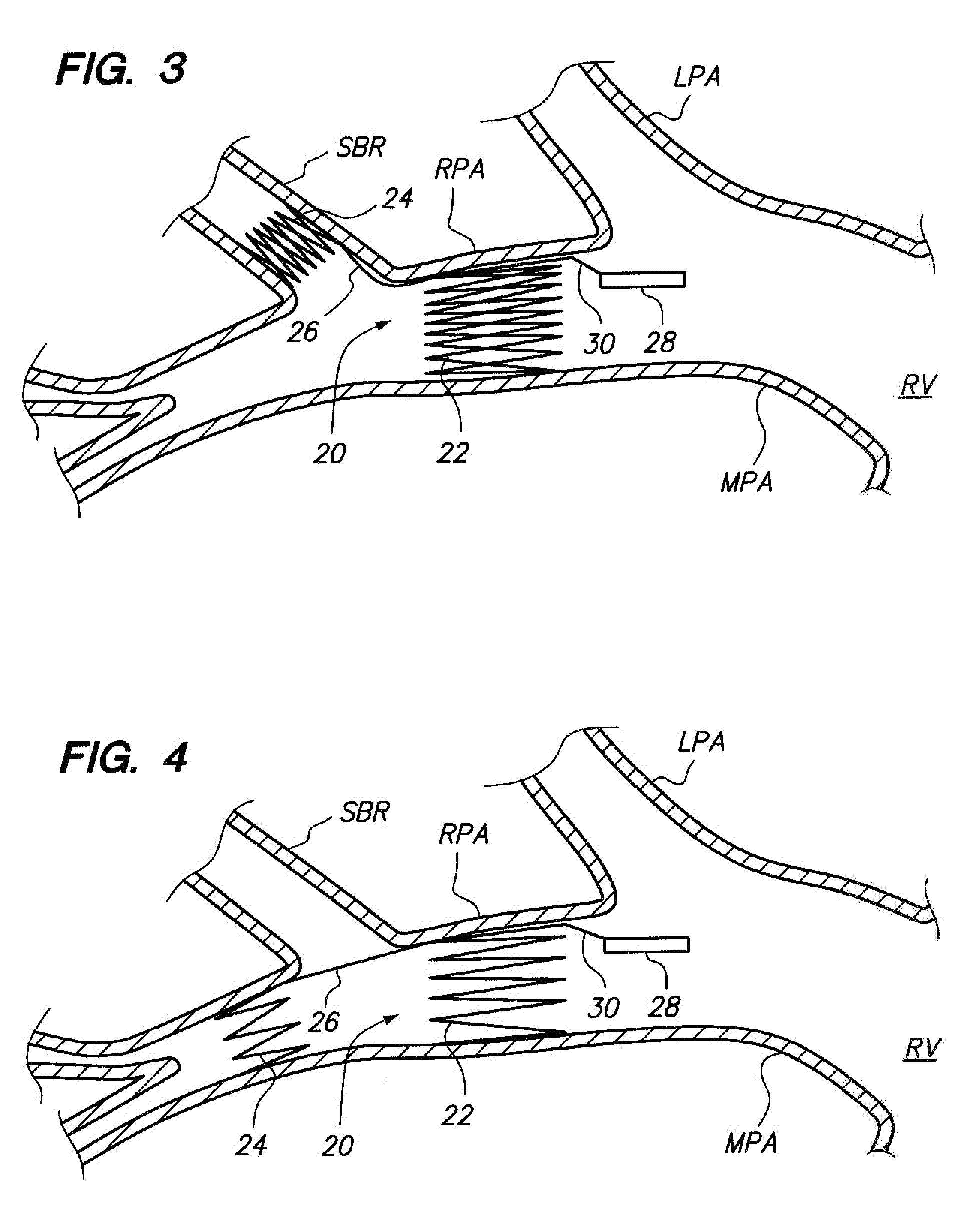Devices For Fixing A Sensor In A Lumen
a sensor and lumen technology, applied in the field of implantable medical devices, can solve the problems of blood clots, perforations or aneurysms, and the sensing device may not be adequately implanted in the vessel segment, so as to reduce the chance of embolism, increase the stability of the sensing device, and reduce the risk of embolism.
- Summary
- Abstract
- Description
- Claims
- Application Information
AI Technical Summary
Benefits of technology
Problems solved by technology
Method used
Image
Examples
Embodiment Construction
[0037] Referring to FIG. 2, an implantable sensing device 20 constructed in accordance with the present inventions will now be described. The sensing device 20 is shown implanted within an anatomical vessel network, and in particular, the pulmonary arterial network of a patient. As previously described, blood flows from the right ventricle RV of the heart H, out through the main pulmonary artery MPA, which branches into the right pulmonary artery RPA and a left pulmonary artery LPA. The blood from the right pulmonary artery RPA further flows into various pulmonary artery branches PBR of the right pulmonary artery RPA.
[0038] The sensing device 20 generally comprises a proximal fixation element 22, a distal fixation element 24, a connecting element 26 mechanically coupling the proximal fixation element 22 to the distal fixation element 24, and a sensing element 28 mechanically coupled to the proximal fixation element 22 via another connecting element 30 opposite the connecting elemen...
PUM
 Login to View More
Login to View More Abstract
Description
Claims
Application Information
 Login to View More
Login to View More - R&D
- Intellectual Property
- Life Sciences
- Materials
- Tech Scout
- Unparalleled Data Quality
- Higher Quality Content
- 60% Fewer Hallucinations
Browse by: Latest US Patents, China's latest patents, Technical Efficacy Thesaurus, Application Domain, Technology Topic, Popular Technical Reports.
© 2025 PatSnap. All rights reserved.Legal|Privacy policy|Modern Slavery Act Transparency Statement|Sitemap|About US| Contact US: help@patsnap.com



